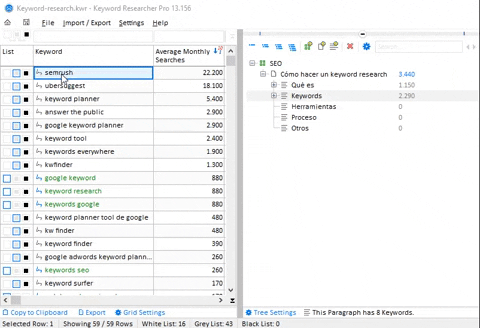Table of Contents
Introduction
So you want to be a web designer? That’s great! Web design is a fun and rewarding field, and there are plenty of ways to become successful. But in order to be a successful web designer, you need to know more than just how to design beautiful websites. In other words, SEO for designers will help you design beautiful and well-optimized sites for search engines.
SEO is one of the most important aspects of web design, and if you’re not familiar with it, you’re at a disadvantage. Don’t worry, though—you don’t need to be an SEO expert to be successful as a web designer. You just need to know the basics and those will help you charge more from your clients in the web design industry. In this article, we’ll teach you the essentials of SEO for web designers. Let’s get started:
What Is SEO for Designers and Why Do They Need It?

When you’re a web designer, you’re responsible for more than just the look and feel of a website. You also need to have a basic understanding of SEO, or search engine optimization.
SEO is the process of optimizing a website so that it ranks higher in search engine results pages (SERPs). When someone searches for a term related to your website, you want your site to be one of the first results they see.
If you’re not familiar with SEO, don’t worry. It’s not as complicated as it sounds. But it is important that you at least have a basic understanding of the concepts so that you can work effectively with your web developer and make sure your site is optimized for search. You don’t need to be an SEO analyst. Just basic knowledge of SEO for Designers is enough and is shared below.
Understanding the Basics of Search Engine Optimization SEO for Designers
To be a successful web designer, you don’t need to be an SEO expert. However, it is important to have a basic understanding of how SEO works so that you can create websites that are search engine friendly.
That means understanding the basics of how search engines rank websites. You need to know what factors influence a site’s ranking, and how you can optimize your website for maximum visibility. You should also be familiar with the most common SEO mistakes and how to avoid them.
If you’re not comfortable with SEO, you can always hire an SEO consultant to help you with the process. But at least have a general idea of what needs to be done so you can make informed decisions about your website design.
The Importance of Keyword Research for Successful Websites

When you’re designing a website, one of the most important aspects you need to focus on is SEO. This stands for “search engine optimization.” What this means is that, in order to make your website successful, you need to ensure that it’s easily found and ranked by Google and other search engines.
How do you do this? By doing keyword research. This is the process of finding the right keywords—the ones that people are likely to type into a search engine when looking for a website like yours. Once you know what these keywords are, you can use them throughout your website, in your titles, in your content, and even in your metatags.
This is essential for making sure that your website is seen by as many people as possible. The more people who find it, the more traffic it will get, and the more successful it will be. So make sure that you focus on SEO for designers when designing your website—it can make all the difference.
SEO for Designers: Optimize Your Content for Google

If you want your website to rank well on search engines, you need to make sure your content is optimized for Google. This means using the right keywords and phrases, as well as making sure your website is formatted correctly.
Google’s algorithm is constantly changing, so it’s important to stay up-to-date on the latest SEO trends. Luckily, there are plenty of resources out there that can help you with this, like Moz and Neil Patel.
It’s also a good idea to use Google Analytics to track your website’s traffic and see which keywords and phrases people are using to find your site. This way, you can adjust your content accordingly and make sure you’re targeting the right audience.
Technical SEO for Designers Tips

Here are some things to keep in mind when it comes to technical SEO:
Site Structure
When building a website, it’s important to have a strong, well-organized site structure. Not only will this help keep your website organized and more easily navigable for visitors, but it also plays a major role in SEO success. Having a strong site structure can help improve the rankings of your website and increase the amount of organic traffic it receives.
Optimize Your Images
Optimizing images on your website is also an important factor in SEO success. By optimizing your images, you can reduce their file size without sacrificing quality, which will help them to load faster and reduce loading times. This can help improve the user experience on your website and can also help improve your SEO rankings.
Tags
Title tags and meta descriptions are two important elements when it comes to SEO success. Title tags are the titles of each page on your website and are used to tell search engines what your page is about. Meta descriptions are brief summaries of each page’s content and can help search engines determine which keywords and phrases to use when indexing your pages. By optimizing your title tags and meta descriptions, you can help increase the visibility of your pages in search engine results.
Enhance User Experience through Web Performance

Improving a website’s performance is key to ensuring that it is successful, and there are several ways to do this. One of the most important ways is creating a mobile-friendly design. Mobile devices are becoming the go-to choice for many users, and having a website that looks great and works well on these devices is essential. Here are some tips for improving your website’s mobile usability.
Responsive Design
Make sure the design is responsive. This means that it should adjust itself to fit the screen size of any device. This will make it easier for users to use the website on any device, without having to zoom in or out.
Test the website on multiple devices. This ensures that the website looks great and functions well on different sizes of screens.
Keep load times in mind. Mobile users have less patience than desktop users, so make sure that your website loads quickly. This can be done by optimizing images, compressing files, and using a content delivery network.
XML Sitemaps
Another important aspect of improving a website’s performance is developing an XML sitemap. This is a file that contains all the important information about your website’s pages, such as the URLs and the date that each page was last modified. An XML sitemap helps search engine crawlers understand the structure of your website and index it correctly. Create a sitemap and submit it to search engines. This will help them crawl and index your website more efficiently.
Use canonical tags to avoid duplicate content issues
Utilizing structured data markup is also important for improving a website’s performance. Structured data markup is code that is used to add additional information to the HTML of your website. This includes things like product reviews, ratings, and prices. By using this markup, search engines can understand the content of your website and display it in the search results in a more useful way.
Technical SEO may seem like a lot to keep track of, but it’s important to consider if you want your website to be successful. Taking the time to optimize your site structure, images, title tags, meta descriptions, web performance, loading page speed, responsive design, structured data, etc can have a major impact on the success of your website. By following the tips outlined above, you can ensure that your website is organized, optimized, and properly indexed by search engines. This can help improve your rankings and increase the amount of organic traffic your website receives.
Measuring and Tracking Your Website Performance
The SEO knowledge you need as a web designer doesn’t stop at the basics. You also need to know how to measure and track your website’s performance. After all, what’s the point of putting all that effort into SEO if you don’t know whether it’s actually working?
Fortunately, there are plenty of tools out there that can help you with this. Google Analytics is a popular choice, and it’s free to use. Once you’ve set it up, you can track things like page views, time on site, and bounce rate.
Another useful tool is Google Search Console. This lets you see how your website is performing in Google search results. You can use it to track things like click-through rate (CTR) and position in the SERPs (search engine results pages).
Armed with this data, you can start to see which SEO strategies are working and which ones aren’t. This will help you fine-tune your approach and make sure your website is as successful as it can be.
As a web designer, it’s essential to understand the fundamentals of SEO when creating a website. SEO, or search engine optimization, is a crucial component for a successful website as it improves your visibility, ranking, and traffic in search engine results. To help you get a better grasp of SEO, here are some frequently asked questions about SEO for designers.
FAQs About SEO for Designers

What is the most important aspect of SEO?
The most important aspect of SEO is keyword research. Keywords are the words and phrases used by users to search for information, products, and services online. By researching and selecting the best keywords for your website and content, you can ensure your website is as visible and successful as possible in search engine results.
How do I optimize my web design for SEO?
Optimizing your web design for SEO involves several key elements, such as using the right keywords, creating helpful, quality content, and optimizing your website’s code. It is also important to optimize your images and media for search engine crawlers, as well as use the appropriate meta tags and titles.
How can I improve my website’s ranking in search results?
Improving your website’s ranking in search results involves a combination of creating quality content, optimizing your website’s code, and building links. Quality content is key, as search engines consider the relevance and helpfulness of content when ranking pages. Optimizing your website’s code involves following best practices for page speed and performance, as well as making sure that your website is mobile-friendly. Building links involves getting other, relevant high-quality websites to link to yours, which helps the search engine rank your site higher in results.
What are SEO best practices?
SEO best practices involve optimizing your website and content for search engine crawlers, using the right keywords, creating quality content, optimizing your website’s code, and building links. Additionally, it is important to use social media tags, such as Twitter Cards, Open Graphs, and Schema.org tags, to help search engines better understand your content.
Concluding SEO for Designers
So, to recap, you don’t need to be an SEO expert in order to be a successful web designer, but having some knowledge of how SEO works and how to apply it will definitely give you an edge. Keep in mind that SEO is always changing, so it’s important to stay up to date with the latest trends and best practices. And as always, if you need help with your SEO, don’t hesitate to reach out to an expert. By learning all the SEO basics shared above, you can also create an attractive web design package for your clients and stay on top of the competition. Start with a few videos on Technical SEO for web designers or get an expert onboard for a few hours to get your feet wet for designing search engine-friendly websites. Good Luck!

